Indoor plants aren’t usually associated with good health. Indeed, many people think of them as decorations or even substitute pets. But as it turns out, plants are good for us, even in pots. Over the past few years, worldwide lockdowns forced much of the global population indoors. So, we got used to staying at home. During this time, the air quality outside got cleaner. But what about the air inside our homes?
How indoor plants create an environment for good health
The value of a healthy indoor environment has never been clearer. Indeed, many of us have been trying to improve our indoor environment while working from home. For example, proper ventilation. Certainly, covid has taught us the importance of having good air circulation. Another component is air quality. After all, fresh air is best for health.
In that regard, indoor plants are green doctors that are good for health. We can use them as natural agents to clear the air at home. What’s more, they do that affordably and organically.
They’re also good for livening up your home. They brighten indoor areas and are a treat to the eyes. Having a collection of green, shade-loving plants add cosiness to your living space. And with their variety of foliage, they make fabulous decor too.

Why indoor air quality needs your attention
People spend about 90% of their time indoors. With those statistics, it’s no surprise that we are called the “indoor generation”. And brings into scrutiny, the quality of our indoor environments.
Indoor Air Quality (IAQ) has received much scientific and public attention of late. Specifically, studies reveal a sharp increase in indoor air pollutants and their levels. As a result, many countries have developed IAQ related policies, standards, and measures.
IAQ significantly impacts human health and wellbeing. In fact, indoor pollutants may sometimes be more toxic than outdoor ones. Particularly in the case of young kids, the elderly, and the sick.

Factors affecting indoor air quality
Two types of factors affect IAQ.
The first is the invasion of outdoor pollutants. These pollutants may be caused by vehicle or industrial emissions. Quite often, they get inside through natural or artificial airing systems.
The second is pollutants generated indoors. They include emissions from heating systems, kitchens, cleaning products, and paints. Human activities, like smoking, further add to these emissions. In addition, an absence of greenery in the neighbourhood raises carbon dioxide levels inside homes. And a lack of proper ventilation makes the situation worse.
How indoor plants improve air quality and promote good health
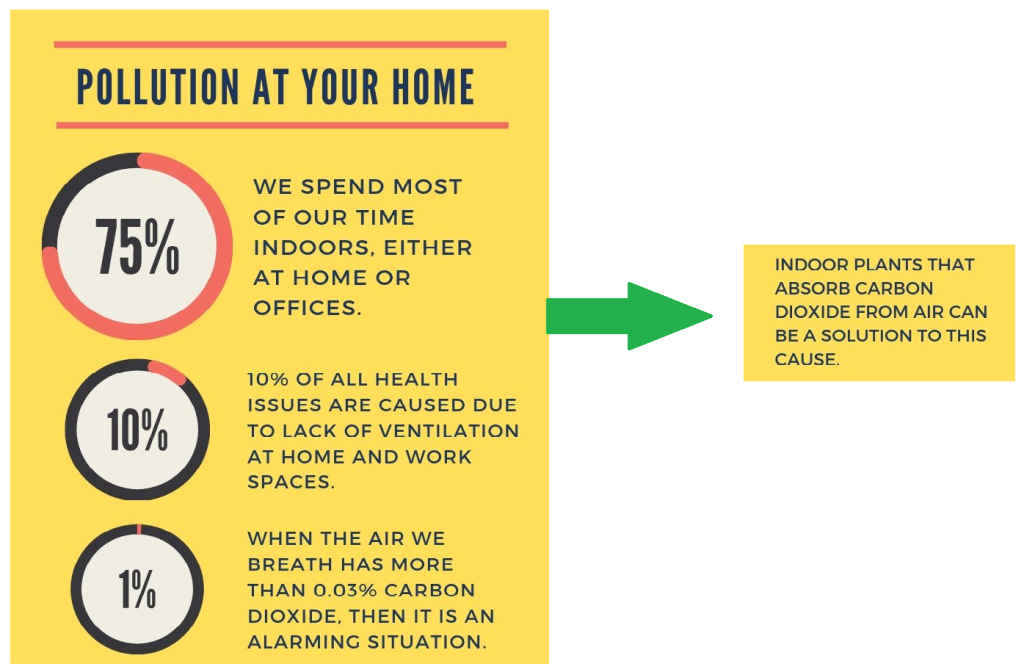
By controlling indoor pollutants, you keep many health risks in check. A few simple changes can make a big difference. Here are some tips:
- Ensure good ventilation to keep your indoor air fresh.
- Get rid of dust and mould with regular cleaning.
- Remove harmful particles in closed interiors with air purifiers.
- Choose furniture and paints with low VOC (Volatile Organic Compound) levels.
- Service heaters and cookers regularly to prevent leakages.
These small steps improve indoor air quality. But for greater effectiveness and sustained performance, having the right indoor plants in your home is your best all-natural solution.
Indoor plants are not just for decoration
Frederico Brilli, a plants expert, urges that plants are not mere ornamental objects. Instead, a combination of plants and intelligent air purifiers can improve IAQ. Plants, through various biological and chemical processes, can clean and cool interiors.
Indoor plants promote good health by filtering air pollutants
Indoor plants are a central aspect of urban nature-based airing systems. They consume little energy and absorb stale air. They also keep your indoors cool and humid. Hence, these plants enhance your indoor environment.
Plants check pollution by acting on many chemicals. Some plants can remove particular pollutants. They convert them into nutrients. In essence, indoor gardening is an indirect approach to improving IAQ.


Indoor plants promote good health by removing toxins
Phytoremediation is a plant-based technology. It holds that a selection of plants can act as an active biological filter. These techniques use plants in various ways, like:
1) Plants arrest the movements of pollutants in soil. This checks their leakage into water and air.
2) Plants can also absorb pollutants from soil. They then release them in the air after breaking them into minor poisonous parts.
3) Plants absorb contaminants from air and water.
4) Plants can convert poisonous substances into harmless chemicals.
What does NASA say?
NASA considers plants to be the basis of natural life. A NASA study found that tiny organisms living in leaves, roots, and soil remove air pollutants. It’s mainly the plant roots and soils that filter contaminants. The microscopic organisms in plant roots then break them to make plant tissues. Further research is required to identify more such plants that improve IAQ.
Indoor plants boost human health in many different aspects
Human health and well-being encompass a wide range of aspects – physical, physiological, mental, and emotional, to name a few. Research has found that indoor plants bring positive impacts on human health in many of those aspects. For example:
- They strengthen the body’s ability to fight diseases by cleaning the indoor environment.
- Scented and unscented indoor plants enhance comfort.
- Indoor herbs like lemon balm and hyssop are household remedies for cold and flu.
- Plants also encourage a positive state of mind by reducing stress.
- Studies have revealed that indoor plants improve the performance of students in the classroom.
Indoor plants play a role in supporting UN’s sustainable development goals in their own way. They enhance natural diversity, reduce carbon dioxide in the atmosphere, and promote good health and well-being in humans.
They’re versatile as decor too. Whether you can place them in pots, hang them on walls, or plant them in garden beds, they bring cosiness into your home.
Which indoor plants are recommended for good health?
Rosemary

Rosemary can survive dry conditions, hot weather, and grow in a variety of soil types. It can absorb heavy metals in its leaves and stem tissues. Thus, it acts as a biomonitor to reveal the rate of metal pollution in the atmosphere.
English Ivy

This evergreen perennial vine is an exotic plant that can thrive in full, deep shade. Found effective in reducing formaldehyde levels up to 90% within 24 hours.
Lavender
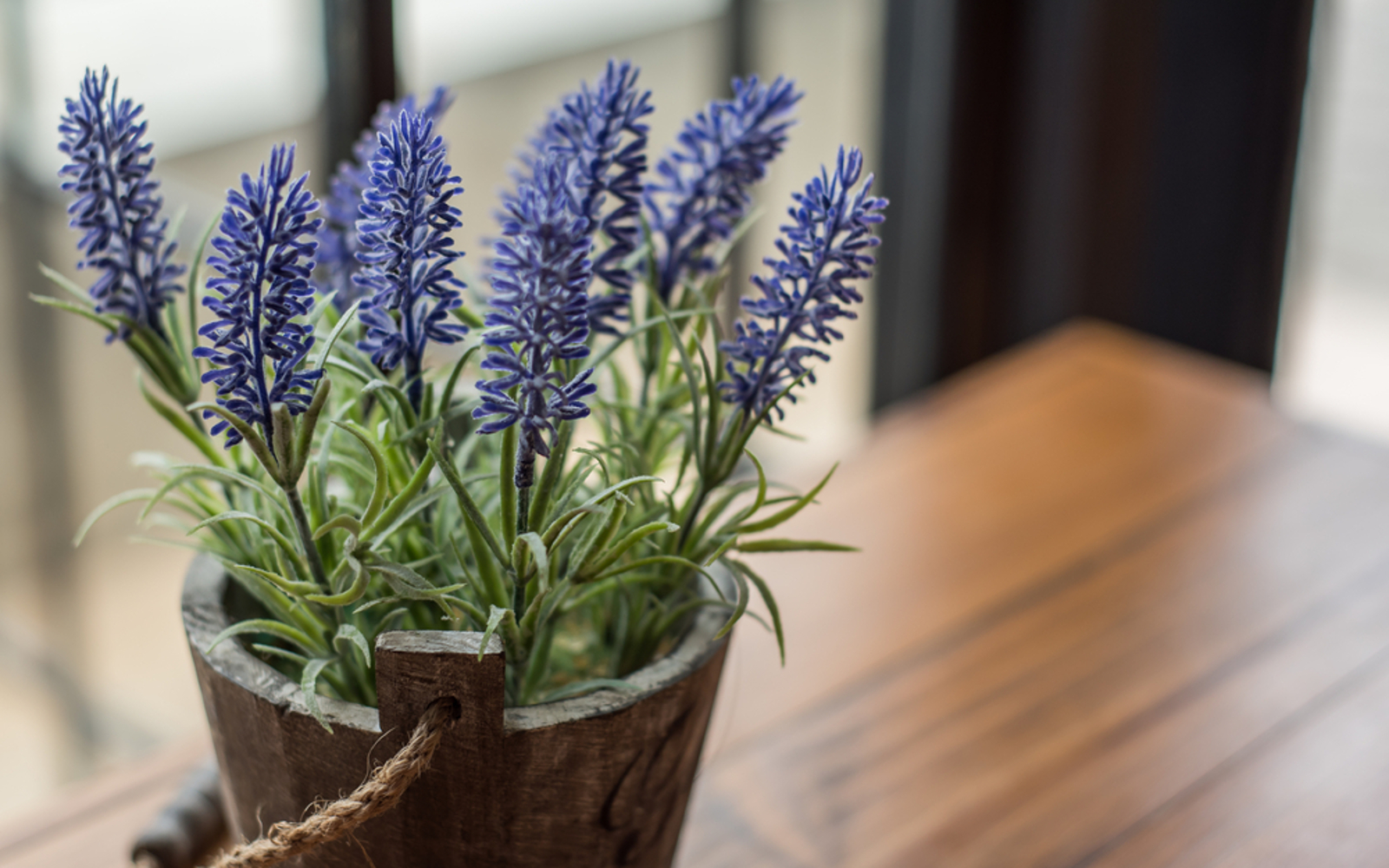
Lavender is one of the most popular aromatics in the world. The natural organic compounds present in its leaves and flowers have many uses. Such as, inducing sleep, reducing anxiety, improving digestion, wound healing, skin and hair care, and reducing inflammation. Lavender enjoys desert environments, so select a sand-based soil to grow the plant from seeds or stem cutting.
Aloe vera

Aloe vera is a variety of succulents also called the wand of heaven, heaven’s blessing, and the silent healer. It’s a promising herb with various clinical applications. Aloe vera not only absorbs CO2 more than other plants, but also releases CO2 less than other plants. Hence, it’s a great option for reducing indoor CO2 concentration. In addition, it does better than other plants in reducing humidity in your home. And it’s known for absorbing harmful substances such as carbon monoxide, sulphur dioxide, and formaldehyde in the air.
Rubber Plant
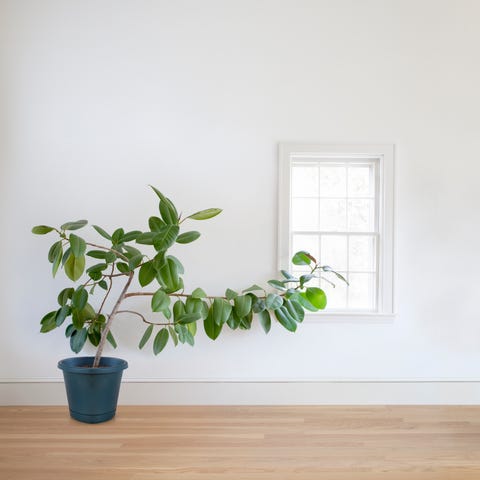
Rubber plants are easy to grow and care for. In fact, they thrive in a variety of conditions. Rubber plants are grown for their glossy, leathery, large leaves. These leaves excel at removing formaldehyde from the air. They prefer bright light but are adaptable to low light. They flourish well in humid conditions, but also tolerate the dry air common in homes.
Jasmine
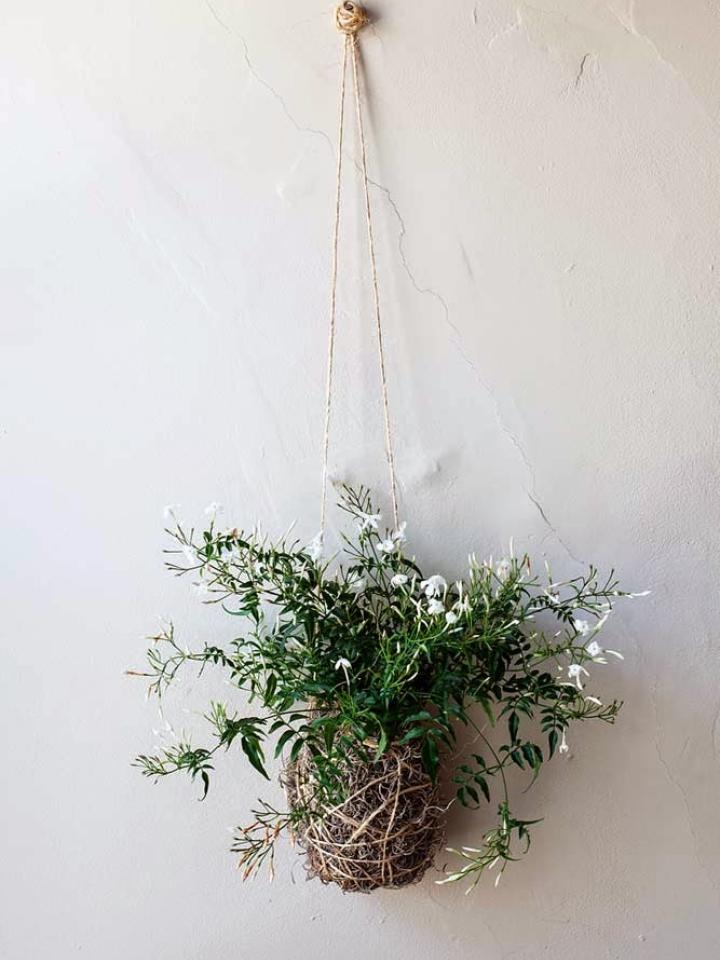
Not all jasmine flowers are fragrant. Jasminum polyanthum, the variety most commonly used for indoors, has a sweet aroma that’s particularly fragrant at night. Jasmine grows best in moist porous soil. These plants are voracious climbers so you’ll need an indoor trellis to keep it in check – and need regular trim. It secretes bactericidal substances that inhibit the growth of tuberculosis, sputum pathogens and typhoid bacteria, and also absorbs ammonia.
Peace Lily

Peace lilies are attractive indoor plants that produce showy white flowers. They are one of the few foliage plants that flower in low light. They are easy to grow, making them a popular choice and one of the top selections of air-purifying house plants. Peace lilies can flourish in almost any well-drained potting mix that is moist but not soggy. They tolerate low light conditions but grow best in bright indirect light. However, one must be aware of the calcium oxalate crystals present in the plant cells which may cause toxicity if consumed.
Snake Plant

With their sculptural leaves, snake plants can readily adapt to new locations and conditions. As a common indoor ornamental plant it has low maintenance requirements, featuring good general aesthetic qualities. Commonly called the ‘bedroom plant’ because it releases higher concentrations of oxygen at night compared to most other plants. NASA and university researchers show that these plants help filter pollutants from air.
Spider Plant
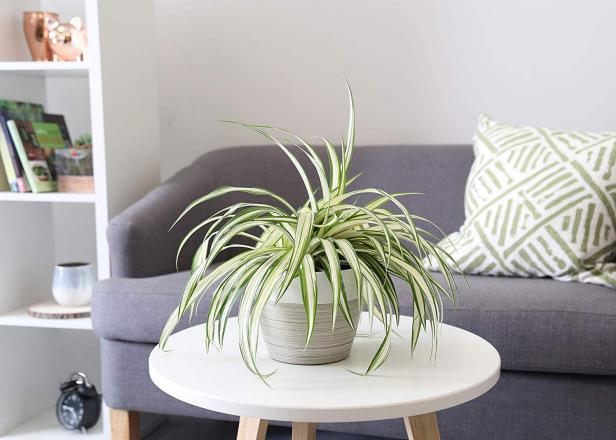
These plants have rosettes of leaves that drape over the edge of the pot. The added feature is longer shoots producing plantlets that can be rooted and separated from the parent plant. They are sensitive to fluoride in tap water. Consider using distilled water or rainwater for the plants. Slightly moist soil and bright to moderate light are all that they need to flourish. It absorbs harmful substances such as benzene, carbon monoxide, and formaldehyde in the air. Known as the indoor “green purifier”, it is suitable for hanging on a balcony.
Gerbera

Gerbera daisy is one of the best air purifying plants known to remove organic compounds. When in bloom, it looks lovely and pleasing. Sunlight is crucial for the Gerberas to bloom. Potting medium should be sandy and free from any contamination. It should also be rich in organic matter to enhance drainage. Pinching off (deadheading) the stem at the base of the flower is a good way to signal the plant not to produce seeds and continue producing flowers.
Boston Fern
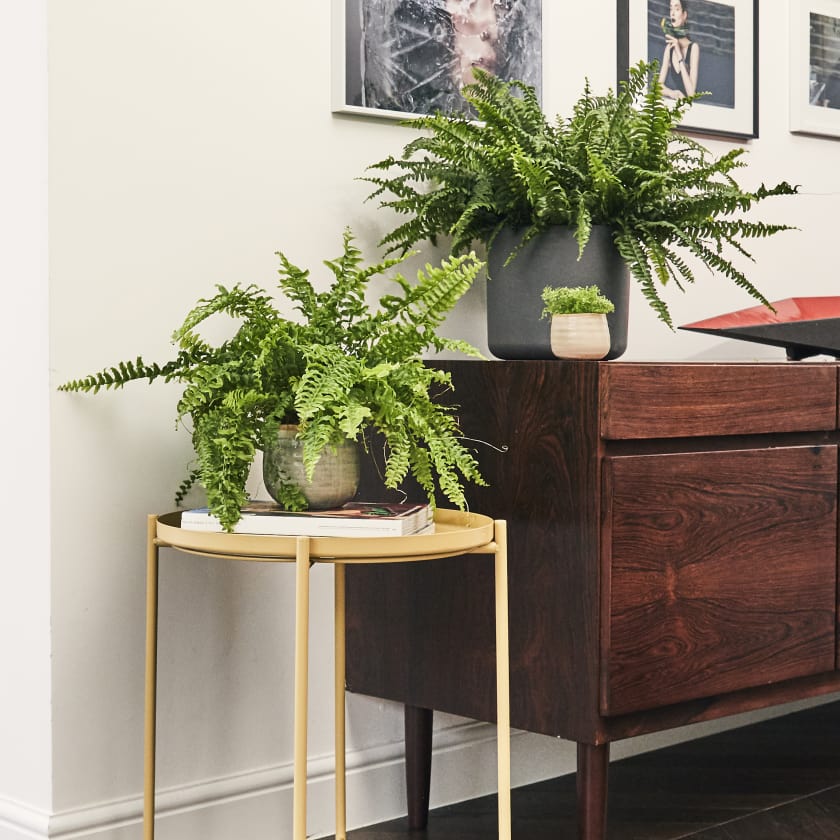
Like a lot of ferns, it’s used to living in partial shade, ideal for a room with lower light. This plant loves humidity and misting a couple of times a week works great for its health. Try to resist touching their fronds as they really don’t like it and it might turn them brown. Boston ferns present the best performance in depleting formaldehyde from the air.
How to make your home ‘thrivable’?
Today, you can get a variety of indoor plants online and in nurseries. What’s more, you could ask for cuttings from your neighbours or community garden too. Indoor plants add life to any space, be it the kitchen, living room, or bedroom. And their wide range means you can choose those that best suit your lifestyle.
For example, green, leafy plants can be placed anywhere in your home. Flowering plants make interiors look beautiful. Herbs can be grown in pots and placed on window sills. And for people who are time-poor, succulents are the easiest to maintain and care for.
So, head over to your nearest nursery today. And let the decor doctors do what they do best – beautifying your home, while cleaning your air, and making you healthier. That’s not all, check out why outdoor green spaces are vital for your good health too. For more tips and information on sustainability, visit Thrive. Keep breathing fresh, keep thriving!























